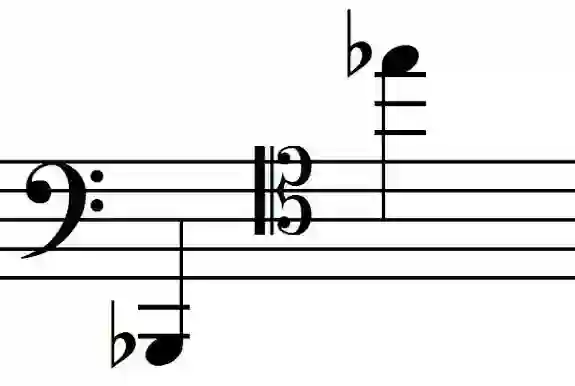Notation and sound generation » Bassoon » Philipp Dangas
Notation and sound generation of the Bassoon
The bassoon is a non-transposing instrument. Its basic scale ranges from B1 to es2. Richard Wagner demanded A1 for his “Ring” and for “Tristan”. At his suggestion, Heckel designed the so-called "A-lintels", a piece of pipe that is attached to the B-lintels as an extension. Richard Strauss also prescribed the A1. However, it is neither customary nor expedient to prescribe the A1.
The entire tone scale of the bassoon is notated according to the actual sound, namely in the low register with the bass clef and in the high register with the tenor clef. The following applies to the intonation of the bassoon within the orchestral interplay: the tone holes are arranged as with all woodwind instruments in such a way that the intervals of the tempered mood result for the chromatic scale, but the exact tone frequency depends on which fingering or tone is used What fingering combination the player is using for the note in question.
The commandment of “playing by hearing” therefore applies to the bassoonist. The double-reed mouthpiece allows only a very small correction in pitch (roughly up to a tone). The overall tuning of the bassoon can be changed by using "S" of different lengths.
Table summary of the playing techniques on the bassoon
The following table lists the playing techniques and playing effects on the bassoon shown. The playing techniques that are not suitable are also briefly mentioned.

The tonal range of the bassoon in large scale
From B1 [contra octave] to es2 [two-line octave]
Internal search function
| Name | Value | Delete |
|---|